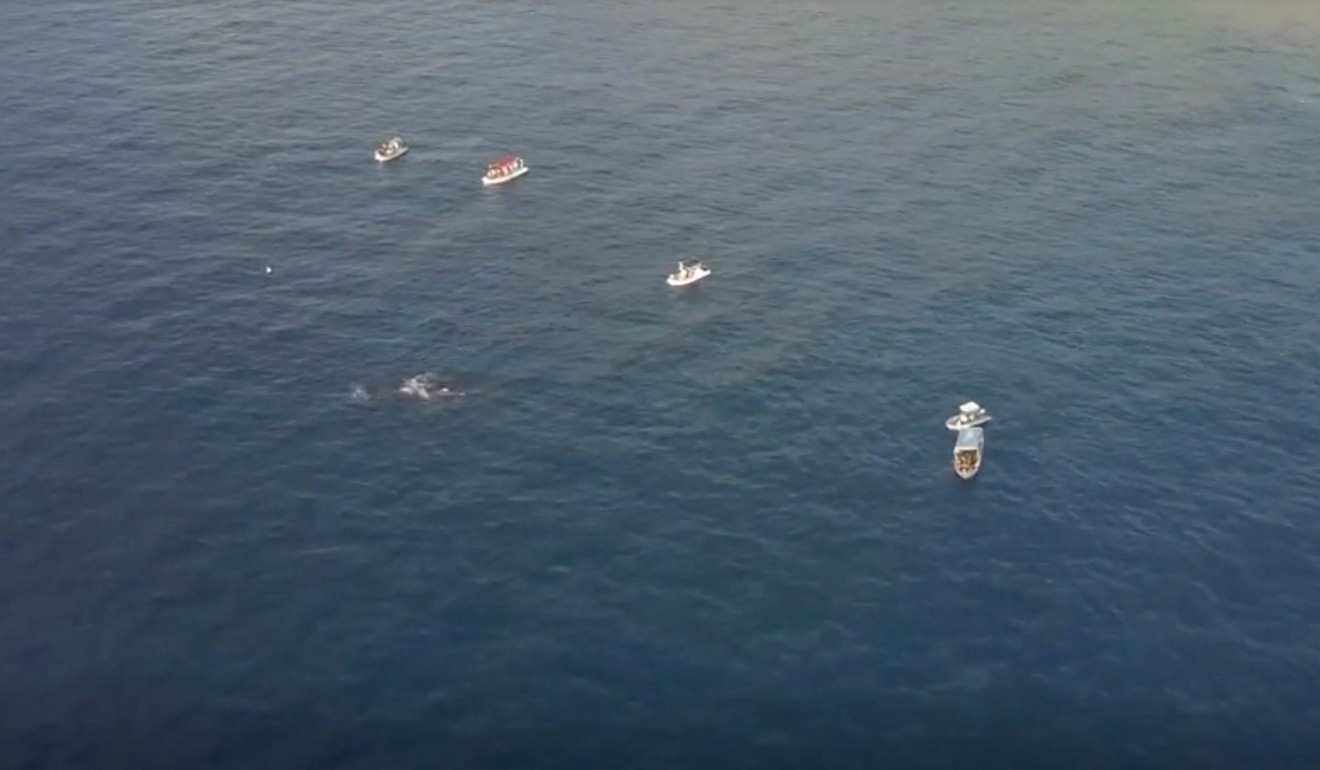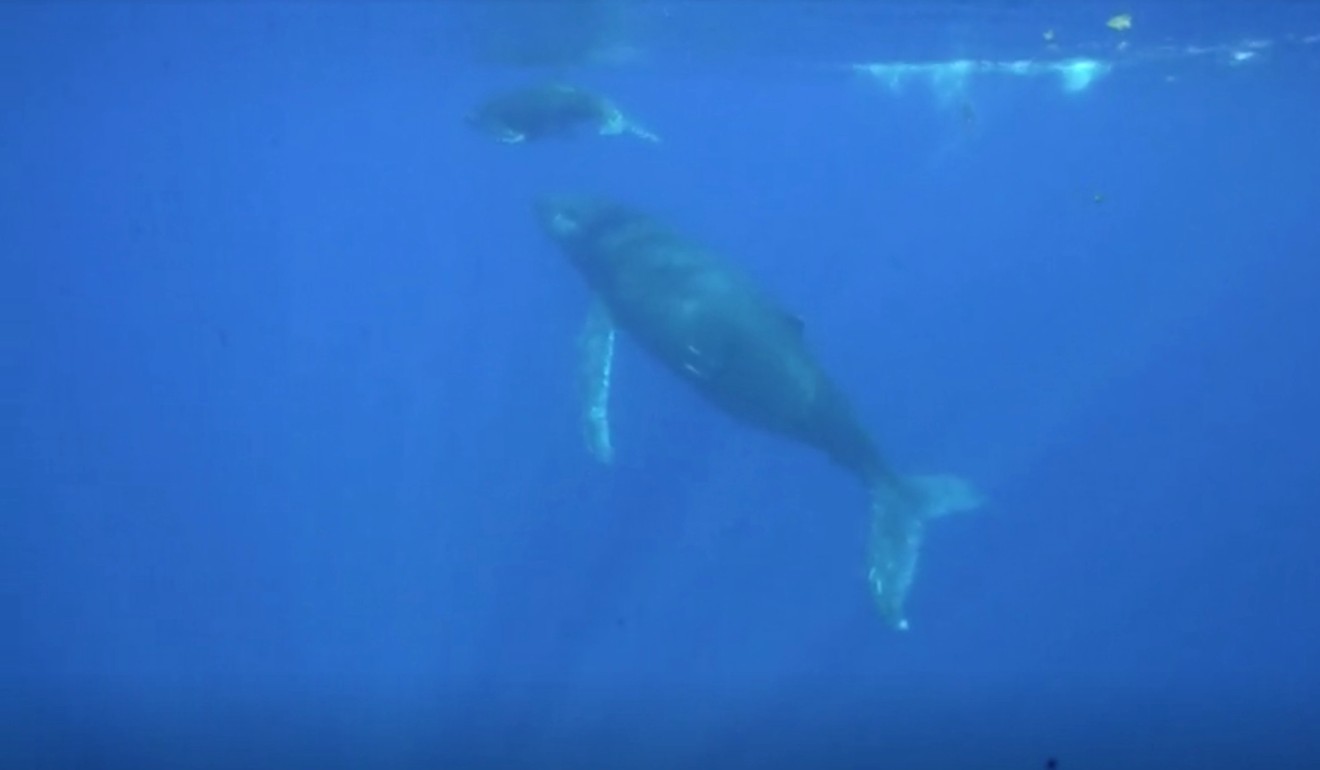
In a noisy ocean, whales go quiet but dolphins start shouting, new studies show
- Bottlenose dolphins near loud ship traffic tended to ‘speak’ like humans in a noisy bar
- But humpback whales seem to stop singing entirely when a ship goes by
The oceans are loud and getting louder all the time, but marine mammals that must live in the din take different approaches to the noise: dolphins perform the equivalent of shouting, while humpback whales go silent, two new studies have found.
“A lot of people imagine that underwater is this really quiet place, but it isn’t,” said biologist Helen Bailey, who studies marine mammals and sea turtles at the University of Maryland.
Sharp noises, like sonar used in oil exploration or explosive Navy war games, can damage whale ears.
Busy cargo lanes thrum with ship traffic. And as the Arctic warms, allowing more ships and industrial developments in previously ice-locked regions, northern marine mammal populations are exposed to more noise.

Increasing ocean noise was identified as a potential problem more than 20 years ago. Near California, the loudness of ship traffic has roughly doubled each decade since the 1960s. But the specific effects of this human-made cacophony are still being pieced together.
Bailey and her colleagues, in a new report published Tuesday the journal Biology Letters, used underwater microphones to listen to bottlenose dolphins about 30km offshore from Ocean City, Maryland. The scientists recorded 77 different animals, who distinguished themselves by their “signature whistles,” Bailey said.
Sound is a cornerstone of dolphin society. Their calls convey important identity information, and they might even use whistles while foraging to alert others to the presence of fish. Dolphins form what Bailey described as “fission-fusion” societies, weaving in and out of social bands. As this happens, it’s “sort of like a family gathering, talking all over each other,” Bailey said. “They’re very vocal and they like to chat.”
Number of Chinese white dolphins in Hong Kong is critically low
When the background sea noise – the ambient sounds of the offshore shipping lanes, which sounds something like loud radio static – began to crescendo, the dolphins used information-poor whistles, Bailey and her co-authors found. The contours of their calls became flat, rather than the richer, curvier whistles.
Bailey used an example of missing house keys. At home, a person might say: “Hey, your keys are between these couch pillows.” But in a noisy bar they might simply shout: “Keys!” A similar loss of information happens with these flatter whistles, she said.

It’s been known that human-made noise can mask animal calls, as long as the frequencies overlap. But in the new study “this adjustment wasn’t just to noise in the same frequency as their calls,” Bailey said.
That surprised her and her co-authors. “We were making assumptions that just weren’t true,” she said. “We have to think a little bit differently about how noise is impacting these animals.”
Most humpback whales are taken off US endangered species list
Halfway across the globe in Japan, researchers recently monitored humpback whales near a remote shipping lane – a single passenger-cargo liner travelled through the area once each day.
Two recorders captured the sounds of the cargo liner and nearby whales. When the ship passed by, “humpback whales seemed to stop singing temporarily,” the study authors reported in their study published Wednesday in PLOS One.

This paper was unusual because “there are not so many studies based on a direct and quantitative approach,” said Sadaharu Koga, a chief scientist at the Japan Ship Technology Research Association. Koga was not directly involved with this research but members of his organisation were.
It is unclear how damaging the cetaceans’ cessations are, but previous studies show that “singing behaviour is related to the breeding strategies of male whales,” Koga said. Songs are a way for males to advertise their presence and attract female whales.
“The water is a perfect medium for conducting sound, which is great if you are a fin whale that needs to find a mate 100 miles away,” Mann said, “but not so great if there are loud human-made sounds that interfere with your attempts to find a date.”

In 2016, the Obama White House directed the National Oceanic and Atmospheric Administration to create high-level guidelines to reduce ocean noise. NOAA finalised its road map in September 2016, a “10-year vision” to understand and manage ocean noise, said Jason Gedamke, manager of the agency’s Fisheries Ocean Acoustics Program.
NOAA has already established a Noise Reference Station Network, which comprises 12 monitoring sites across US waters, and a Passive Acoustic Data Archive that includes map where the public can observe the location of data collection sites.
But there are no rules for marine sounds comparable to those that limit noise pollution on land, Bailey said. Specific noisy activities, like an oil company’s seismic survey, might require a permit. For general boat noise, though, “there are no regulations,” she said. “If we can make everything” – like ship engines, she said – “just a little bit quieter then we can reduce this problem.”

